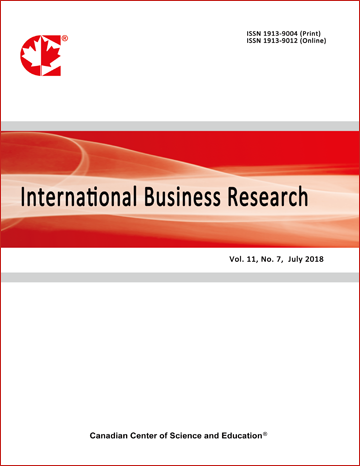Laboratory Environmental Conditions Influence Patent Inventors’ Creative Self-efficacy
- Shih-Hao Wang
- Chung-Lin Tsai
- Han-Chao Chang
Abstract
A comfortable experimental environment usually enables stress relief among inventors, allowing them to focus on inventing. However, to facilitate smooth and continuous experimental procedures, the public spaces and computing environments of conventional laboratories are usually replete with heavy instruments and interconnected wires; consequently, inventors have limited space to conduct complex experiments. These public spaces and computing environments negatively affect the creative self-efficacy (CSE) of inventors. Based on CSE theory and modified information layout complexity theory, in this study, 100 inventors who had obtained patents were recruited. The results indicated that a wireless cloud public space and computing environment positively moderated and enhanced the relationship between low layout complexity and inventor CSE; conventional public spaces and computing environments featuring cables negatively moderated and weakened the relationship between high layout complexity and inventor CSE. More than 40% of participants highly supported using one electronic tablet to manipulate multiple instruments. The results also revealed that approximately 64% of participants did not think they were essential in promoting critical mass in the laboratory. This finding was significantly different from the degree centrality of creativity perspective. Critical indicators of inventor CSE were found to be inventors’ decision-making capabilities regarding innovative research directions and their communication skills with supervisors.
- Full Text:
 PDF
PDF
- DOI:10.5539/ibr.v11n5p159
Journal Metrics
h-index (January 2024): 102
i10-index (January 2024): 947
h5-index (January 2024): N/A
h5-median(January 2024): N/A
( The data was calculated based on Google Scholar Citations. Click Here to Learn More. )
Index
- Academic Journals Database
- ACNP
- ANVUR (Italian National Agency for the Evaluation of Universities and Research Institutes)
- CNKI Scholar
- COPAC
- CrossRef
- EBSCOhost
- EconBiz
- ECONIS
- EconPapers
- Elektronische Zeitschriftenbibliothek (EZB)
- EuroPub Database
- Excellence in Research for Australia (ERA)
- Genamics JournalSeek
- Google Scholar
- Harvard Library
- IBZ Online
- IDEAS
- Infotrieve
- Kobson
- LOCKSS
- Mendeley
- MIAR
- Norwegian Centre for Research Data (NSD)
- PKP Open Archives Harvester
- Publons
- Qualis/CAPES
- RePEc
- ResearchGate
- ROAD
- Scilit
- SHERPA/RoMEO
- SocioRePEc
- Technische Informationsbibliothek (TIB)
- The Keepers Registry
- UCR Library
- Universe Digital Library
- ZBW-German National Library of Economics
- Zeitschriften Daten Bank (ZDB)
Contact
- Kevin DuranEditorial Assistant
- ibr@ccsenet.org
